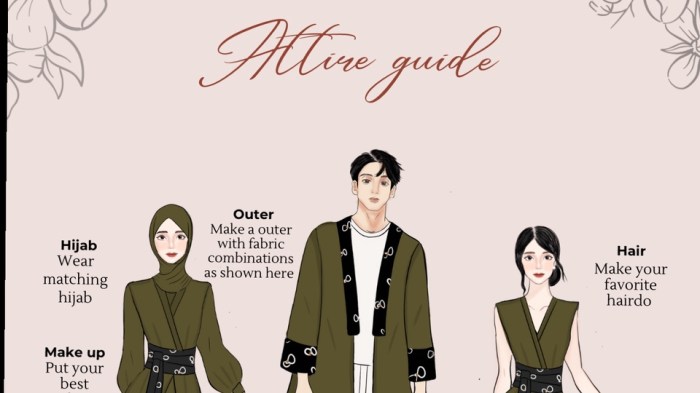Formal Dress for Wedding Reception
Formal Wedding Reception Dresses: A Comprehensive Guide: Formal Dress For Wedding Reception

Source: fastwork.co
Formal dress for wedding reception – Choosing the perfect dress for a wedding reception requires careful consideration of various factors, from style and silhouette to color, accessories, and etiquette. This guide provides a comprehensive overview to help you navigate the process and select an outfit that is both stylish and appropriate for the occasion.
Types of Formal Wedding Reception Dresses

Source: pressablecdn.com
Formal wedding reception dresses come in a wide array of styles, each offering a unique silhouette, neckline, and sleeve length. Understanding these variations allows you to choose a dress that flatters your body type and reflects your personal style.
Choosing the right formal attire for a wedding reception can be a delightful yet challenging process. Finding a dress that flatters your figure is key, and thankfully, there are numerous stylish options available for everyone. For instance, you might find inspiration by exploring resources dedicated to showcasing the elegance of fat brides in wedding dresses , which often highlight flattering silhouettes and fabrics.
Ultimately, the goal is to select a formal dress that makes you feel confident and beautiful for the celebration.
| Dress Style | Silhouette | Neckline | Suitable Body Types |
|---|---|---|---|
| A-Line | Flowing from shoulders to hem, flattering the waist | Versatile; V-neck, sweetheart, round | Most body types; especially those wanting to balance proportions |
| Sheath | Straight, close-fitting | V-neck, bateau, halter | Slender figures; accentuates curves |
| Mermaid | Fitted through the hips, flaring out at the knees | Sweetheart, strapless, halter | Hourglass figures; emphasizes curves |
| Ballgown | Full skirt, fitted bodice | Various; strapless, sweetheart, off-the-shoulder | Most body types; creates a dramatic look |
Common fabrics for formal dresses include silk (known for its luxurious drape and sheen), chiffon (a lightweight, flowing fabric ideal for summer weddings), satin (a smooth, lustrous fabric with a subtle sheen), lace (delicate and intricate, adding a touch of elegance), and velvet (a rich, heavy fabric perfect for winter weddings).
Color Palette and Design Elements
The color and design elements of your dress should complement the wedding’s theme and the time of year. Consider the overall atmosphere and choose colors and embellishments that enhance your look without overpowering the bride.
Popular embellishments include beading (adding sparkle and texture), embroidery (creating intricate patterns), lace (adding delicate detail), and sequins (providing shimmer and shine). A deep emerald green silk gown, for instance, in a mermaid silhouette, could be beautifully accented with delicate silver beading along the neckline and waistline, creating a sophisticated and glamorous look.
Accessories and Styling
Accessories play a crucial role in completing your formal wedding reception look. The right shoes, jewelry, handbag, and headpiece can elevate your outfit and reflect your personal style.
- Shoes: Choose heels that are comfortable and appropriate for the venue.
- Jewelry: Select pieces that complement your dress and don’t clash with the overall look.
- Handbags: Opt for a clutch or small bag that’s elegant and functional.
- Headpieces: A delicate headband or hairpins can add a touch of elegance.
Hair and makeup should complement your dress and the overall wedding style. A sleek updo might pair well with a sleek sheath dress, while loose curls could complement a flowing A-line gown. Makeup should be sophisticated and enhance your natural features.
Etiquette and Dress Code Considerations
Always adhere to the wedding’s dress code. Understanding the dress code ensures you choose an appropriate outfit that respects the event’s formality and the couple’s wishes.
- Black-tie: Floor-length gowns are generally expected.
- Cocktail: Knee-length or midi dresses are suitable.
- Semi-formal: A dressy cocktail dress or a knee-length skirt and top combination are appropriate.
Carefully review the invitation for dress code specifications. If unsure, contact the wedding party for clarification.
Finding and Purchasing the Perfect Dress
Numerous options exist for finding your perfect dress, from online retailers to brick-and-mortar boutiques. Consider your budget, preferred style, and comfort when making your selection.
- Online Retailers: Offer convenience and a wide selection.
- Brick-and-Mortar Boutiques: Allow for personal fittings and expert advice.
Before purchasing, create a checklist including budget, fit, comfort, and overall style. Consider the pros and cons of ready-to-wear versus custom-made options. Ready-to-wear offers convenience and affordability, while custom-made provides a perfect fit and unique design.
Post-Reception Dress Care, Formal dress for wedding reception

Source: co.uk
Proper care extends the life of your formal dress. Cleaning, storage, and preservation techniques are crucial, especially for delicate fabrics and embellishments.
- Cleaning: Professional cleaning is recommended for most formal dresses.
- Storage: Store the dress in a breathable garment bag to protect it from dust and damage.
- Preservation: Consider professional preservation for long-term storage.
Preventing damage includes avoiding harsh chemicals, keeping the dress away from direct sunlight and heat, and carefully handling any embellishments. Professional cleaning is especially important for delicate fabrics and embellishments to prevent damage and maintain the dress’s quality.
Top FAQs
Can I wear a jumpsuit to a formal wedding reception?
Jumpsuits can be appropriate for formal wedding receptions, especially if they are made of luxurious fabrics like silk or velvet and feature elegant details.
What if the invitation doesn’t specify a dress code?
If the invitation lacks a dress code, it’s best to err on the side of formality. A floor-length gown or a sophisticated cocktail dress is generally a safe choice.
How far in advance should I start shopping for a wedding reception dress?
Ideally, begin shopping 2-3 months before the wedding to allow ample time for alterations, if needed, and to avoid last-minute stress.
What should I do if my dress gets stained at the reception?
Act quickly! Blot (don’t rub) the stain with a clean cloth or napkin. If possible, take it to a professional cleaner immediately after the event.

















